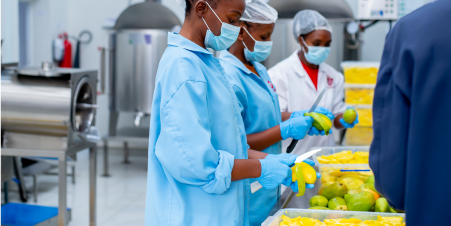Are you planning to start a fruit juice processing plant in Kenya? Whether you’re a farmer looking to reduce post-harvest losses, an investor eyeing the booming health
drink market, or an agro-processor seeking value addition opportunities, this guide is for you.
We walk you through every step, from market research and plant setup to equipment, licensing, and marketing with practical tips tailored for the Kenyan context. Let’s dive in.
1. Conducting Market Research for a Juice Plant
Start by understanding your potential customers. Are you targeting urban health-conscious consumers, school canteens, or export markets?
- Local demand for fruit juice (mango, passion, pineapple, etc.)
- Existing competitors and pricing
- Preferred packaging sizes and types
- Trends in natural, sugar-free, or organic juice consumption
2. Creating a Business Plan for Fruit Juice Processing
A solid business plan gives you direction and is essential for attracting investors or funding.
- Business objectives and mission
- Target market and product offerings
- Production capacity and plant size
- Equipment and infrastructure needs
- Financial projections (startup costs, breakeven point, ROI)
- Marketing and distribution strategies3. Choosing the Right Location and Setting Up Infrastructure
Location is key. Choose a site that balances proximity to raw fruit sources with access to roads, water, and electricity.
Set up infrastructure including:
- Processing room with hygienic surfaces
- Cold storage for raw fruits and finished juice
- Utility connections (clean water, stable power supply, drainage)
- Equipment installation space and waste disposal zones
4. Sourcing Quality Fruits for Juice Production
Secure a consistent supply of high-quality, pesticide-free fruits. You can:
- Contract local farmers during harvest seasons
- Source from cooperatives or fresh produce markets
- Consider outgrower programs for long-term supply
Remember, good juice starts with good fruit.
5. The Commercial Juice Extraction Process
Once fruits are received and sorted, the processing flow typically follows these steps:
- Washing & Sorting – Remove dirt, spoiled fruit, and foreign matter.
- Crushing or Pulping – Break down the fruit to extract juice or puree.
- Filtration or Centrifugation – Remove solids and refine the juice.
- Blending & Adjustment – Add natural sweeteners, pulp, or stabilizers if needed.
Use food-grade stainless steel equipment for safety and durability.
6. Juice Pasteurization for Shelf Life & Safety
Pasteurization is the process of heating the juice to kill harmful microbes. This extends shelf life without compromising taste.
Ensure you maintain the right temperature-time combination (usually around 85°C for 15–30 seconds) to meet KEBS standards.
7. Juice Packaging and Labeling Best Practices
After pasteurization, fill the juice into clean, sterile containers such as:
- PET or glass bottles
- Aluminum cans
- Cartons
Label your product with:
- Product name and ingredients
- Expiry date and batch number
- Manufacturer details
- KEBS standardization mark (after certification)
8. Implementing Quality Control in Juice Manufacturing
Quality control protects your brand and your customers. Set up checks at every stage:
- pH and Brix (sugar) levels
- Microbiological tests
- Visual and taste assessments
Document your process for food safety audits and traceability.
9. Fruit Juice Distribution and Storage Logistics
Build a reliable distribution system by partnering with:
- Local supermarkets and mini-marts
- School and hospital canteens
- Online food delivery services
Keep your juice in cool storage (4–10°C) to preserve freshness. Use insulated transport if delivering to long-distance retailers.
10. How to Market Your Fruit Juice Brand
Marketing helps you stand out in a crowded market. Strategies include:
- Social media campaigns (Facebook, TikTok, Instagram)
- Sampling in supermarkets or events
- Partnerships with gyms, schools, or influencers
- Branded delivery vehicles and uniforms
Create a strong visual identity and use storytelling around your juice’s origin or health benefits.
11. Complying with Regulations and Licensing
In Kenya, you’ll need to register your business and apply for:
- KEBS certification for food products
- Ministry of Health food handling licenses
- NEMA clearance if dealing with waste or large-scale operations
- County business permits
Working with a food technologist or regulatory consultant can save time and ensure compliance.
Conclusion: Start Your Juice Processing Journey Today
Setting up a fruit juice processing plant is a strategic move for anyone looking to enter the agribusiness or FMCG space. With the right equipment, location, fruit supply, and market insight, your plant can deliver consistent quality and long-term profits.
Need help choosing the right machinery, designing your production layout, or sourcing installation experts? Techwin Limited specializes in stainless steel juice processing systems, pasteurizers, tanks, and turnkey solutions designed for local conditions.
Contact us today on 0719034950 to turn your juice business idea into reality.

